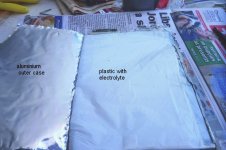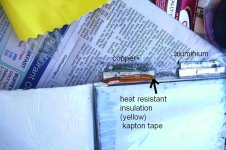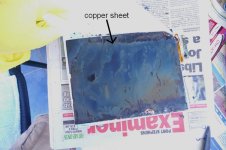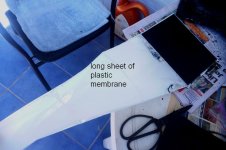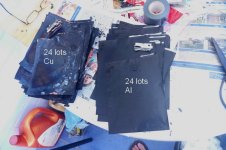arkmundi said:
ohzee said:
So right now I am using my 306b to charge/discharge each cell to see which one or ones are weak. Could not think of any other way to determine
Well, yea, you need to do a capacity test. The various balance chargers do that by logic chip, but it can be done rather crudely manually. Its charge-discharge-charge. Charge to optimal max, in the order of 3.6V. Discharge with a monitor of some kind, a multimeter or celllogs so during discharge you can see voltage drop. My 12S1P AMP20 pack has a balance harness attached and two celllogs, so I see the whole curve. My approach is the rack up the front wheel (Heinzmann 500watt front hub motor) and duct tape the throttle on. At max throttle, it'll take about two hours to discharge the pack to interesting levels. I'm no longer fearful of a near-full discharge, given how robust the A123 nanophosphate is. See what happens to each cell on discharge. Then its easy to spot the weak one. And with a stash, replace it if need be. Since I depleted my stash, that's not an option for me, but with 10 in the box, you're good.
So 2 weeks later of pretty much daily charging/discharging/charging my 24 cells I have determined that they are all indeed fine. I get right around 18ah capacity give or take a small variation on each cell. So that's good and bad news.. Good news I don't need to replace any cells. Bad news that my BMS may need to be replaced.
So I charged my batteries via the BMS prior to my charge/discharge/charge and what I have noticed is that he cells near 20+ are taking up to 1.5 additional Ah
from my 306b before doing a capacity test.
So I figure my options are as follows. Also this is a EV Assemble high discharge BMS.
- Add taps to my 24s battery so I can charge 6s at a time with my 306b while balancing at the same time and use the BMS for discharge.
- Balance the cells with my 306b once and then use the BMS to charge/discharge and see if capacity is normal.
- Break out the founding power 24s BMS I bought some time ago and give it a try. It has just been sitting on the shelf for such an occasion.
Anyway wanted to follow up.
As a bit of entertainment I did put the bike on blocks & ran the throttle full open to test capacity on a 20s a123 battery I also have which was fine for an hour , but
then I came back and the motor was not moving & hot as sh1t. Quickly disconnected & directed a couple fans at the 5404 motor to cool it down. Spent last weekend
taking the thing apart. I managed to melt the internal hall wires along with some of the solder. Good part of this is none of the halls failed so once I re-spliced all my
wires and put it back together I was back in business. Will not do that again and had a feeling it was a bad idea anyway.. Live and learn. Hoping I did not damage the
magnets to much. Need a CA 3 with the temp sensor option to shut the motor down. Going to do that as I near completion of the phasor.



